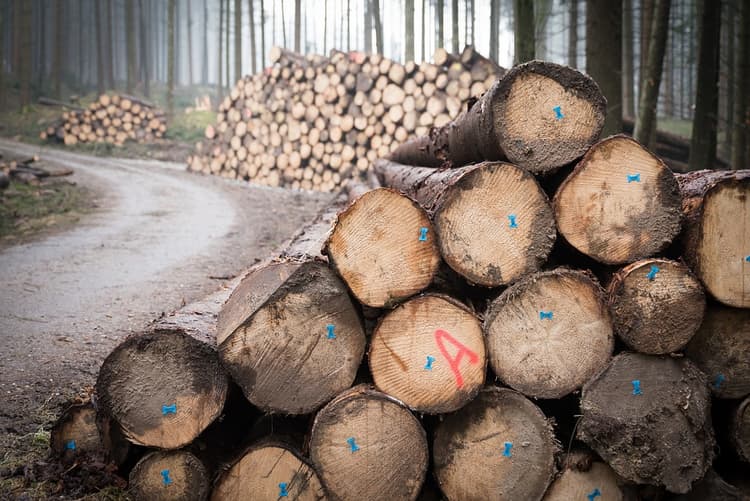Sustainable Forestry
Liam Thomas
6 min read
Listen to this study note
Study Guide Overview
This study guide covers sustainable forestry, focusing on its definition, importance (timber, clean water, wildlife habitat, climate regulation), and key strategies (reforestation, reusing wood, prescribed burns, integrated pest management). It emphasizes the balance between resource utilization and forest health, connecting sustainable practices to benefits like carbon sequestration and biodiversity. The guide also provides exam tips for multiple-choice and free-response questions about sustainable forestry's role in climate change mitigation and biodiversity, including practice questions and scoring breakdowns.
#AP Environmental Science: Sustainable Forestry - Your Night-Before Guide
Hey there, future AP Environmental Science whiz! Let's get you prepped and confident for tomorrow's exam. We're going to break down sustainable forestry into bite-sized pieces, so you can walk in feeling like you've got this! 🌳💪
#What is Sustainable Forestry?
Sustainable forestry is all about managing our forests so they can keep providing for us and for future generations. It's like being a responsible forest caretaker, balancing our needs with the long-term health of the ecosystem. Think of it as a three-legged stool: economic, social, and environmental needs all need to be in balance.
It's not just about cutting down trees; it's about making sure the forest stays healthy and productive for the long haul. This includes maintaining biodiversity, water quality, and carbon sequestration.
#Why is it Important?
Forests do so much for us! They provide:
-
Timber: For building and other products.
-
Clean Water: Forests filter water naturally.
-
Wildlife Habitat: Homes for countless species.
-
Climate Regulation: They soak up CO2, helping to fight climate change. 💡

Image: A reminder of the resources forests provide and the importance of managing them sustainably.
#Finding the Balance
It's all about finding a sweet spot between using forest resources and making sure forests stay healthy and productive. Think of it like a seesaw – we need to keep it balanced.
#Key Strategies for Sustainable Forestry
Here are some ways we can reduce our impact on forests:
-
Reforestation: Planting trees to replace those that have been cut down. This helps with biodiversity, reduces erosion, and fights climate change. Think of the Urban Tree Project in the US as a great example. 🌲
-
Reusing Wood: Instead of always cutting down new trees, let's get creative and reuse wood for other projects. Like turning old fence wood into a birdhouse! ♻️
-
Prescribed Burns: Setting controlled fires to reduce the risk of larger, more damaging wildfires. It's like giving the forest a little spring cleaning. 🔥
-
Integrated Pest Management (IPM): Removing infected trees to protect the forest from pests. Think of it like a forest doctor, carefully treating sick trees. 🐛
RRPI: Remember these four strategies with this acronym: Reforestation, Reusing wood, Prescribed burns, Integrated Pest Management.
When discussing sustainable practices, always link them back to the specific benefits they provide. For example, reforestation helps with carbon sequestration and habitat restoration. This shows a deeper understanding of the concepts.
#Final Exam Focus
Okay, let's get down to brass tacks. Here’s what to focus on for the exam:
-
High-Value Topics:
- The importance of forests in carbon sequestration and climate change mitigation.
- The interconnectedness of forest health, biodiversity, and water quality.
- Different sustainable forestry practices and their impacts.
-
Common Question Types:
- Multiple-choice questions on the definition of sustainable forestry and its components.
- Free-response questions (FRQs) asking you to evaluate the effectiveness of different forestry practices.
- FRQs that require you to link forestry practices to broader environmental issues like climate change and biodiversity loss.
Remember that sustainable forestry is not just about the environment; it also considers economic and social needs. This holistic approach is key to long-term success.
#Last-Minute Tips
- Time Management: Don't spend too long on any one question. If you get stuck, move on and come back to it later.
- Common Pitfalls: Avoid vague answers. Be specific and use scientific terminology. Always explain the “why” behind your answers.
- FRQ Strategies: Read the question carefully and plan your response before you start writing. Use clear topic sentences and support your claims with evidence.
#Practice Questions
Alright, let's test your knowledge with some practice questions!
Practice Question
Multiple Choice Questions
-
Which of the following is NOT a primary goal of sustainable forestry? a) Maximizing timber production b) Preserving biodiversity c) Maintaining water quality d) Mitigating climate change
-
Reforestation is primarily aimed at: a) Increasing soil erosion b) Decreasing carbon sequestration c) Restoring forest ecosystems d) Promoting monoculture plantations
-
Integrated Pest Management (IPM) in forestry primarily focuses on: a) Using broad-spectrum pesticides b) Removing infected trees c) Ignoring pest infestations d) Planting only pest-resistant species
Free Response Question
Discuss the importance of sustainable forestry practices in mitigating climate change and promoting biodiversity. Include specific examples of sustainable forestry techniques and explain how they contribute to these goals. (10 points)
Scoring Breakdown:
- (2 points): Briefly define sustainable forestry and its goals.
- (3 points): Explain how forests act as carbon sinks and the role of sustainable forestry in enhancing this process. Provide an example (e.g., reforestation).
- (3 points): Discuss the importance of biodiversity in forest ecosystems and how sustainable forestry practices maintain or improve it. Provide an example (e.g., IPM).
- (2 points): Discuss the importance of balancing economic, social, and environmental needs in sustainable forestry.
You've got this! Go get 'em! 🎉
Continue your learning journey

How are we doing?
Give us your feedback and let us know how we can improve





